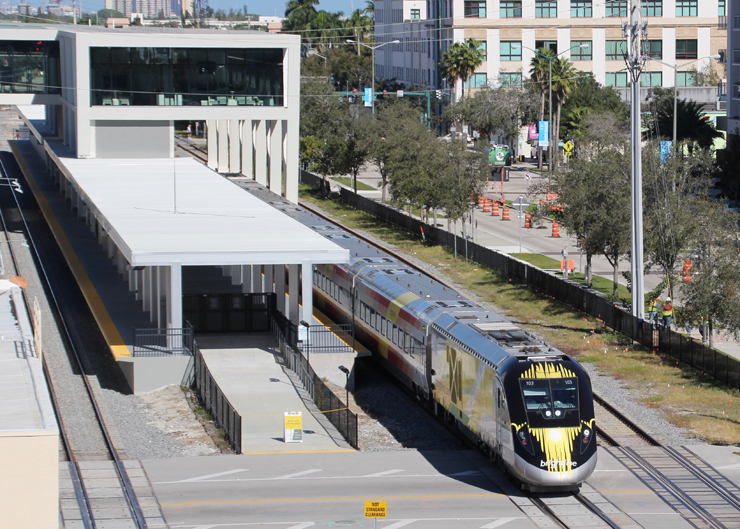
MIAMI — Brightline CEO Michael Reininger is more optimistic than ever about the prospects for high speed rail in the United States but wants to see more opportunities for the private sector to get involved.
In building the Brightline Florida system, the company accessed private activity bonds, which are tax-exempt bonds issued by city or state governments on behalf of private corporations. But federal law limits the total of these bonds to $15 billion and the fund is nearly exhausted. Speaking in an online conference with a handful of reporters on Tuesday, Reininger said he would like to see the limit raised.
Earlier this year, Transportation Secretary Pete Buttigieg highlighted private activity bonds as “something that is already there” and could help bring private capital to the administration’s ambitious infrastructure projects.
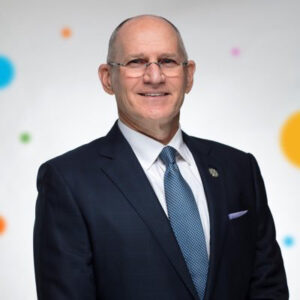
Trains News Wire asked Reininger about his discussions with the Biden administration and Congress. “We enjoy really good reception with the administration and we have some very vocal and powerful supporters of our program in Congress,” he said.
Reininger urges reform in the Railroad Rehabilitation & Improvement Financing program. This program authorizes $35 billion in direct loans or loan guarantees for rail construction or rehabilitation projects, and is overseen by the U.S. Department of Transportation. Just $7.1 billion of funds have been tapped. Reininger attributes that to the credit risk premium attached to these loans.
That premium exists because Congress has not allocated any funds to the RRIF program, so the cost of providing the loan is passed to the borrower. High-speed rail projects in the U.S., with little history, carry a high risk in capital markets. Reininger says the premiums “represent very large upfront equity costs for these projects [and] make the economic benefits of the low-cost loan much less attractive than they otherwise would be.”
Other federal grant programs are only available to public entities such as transit agencies, and the Brightline CEO calls that a missed opportunity.
“So those are the things that we are beating the drum around, because we don’t want to let the most important moment in time that we’ve observed go by without seizing the opportunity,” Reininger says, referring to enthusiasm among Washington Democrats for massive infrastructure and transportation investment.
Brightline will need to access private dollars as it restarts its Las Vegas-California project. Reininger, speaking from Las Vegas, says, “We are heavily engaged right now in pushing that project forward.” Brightline West is working on design and engineering, and concluding environmental reviews, with an eye toward tightening cost projections. “When we come back to the capital markets, hopefully in the very near future, we’ll be able to do so with the most buttoned-up project that we possibly can.”
In Florida, where Brightline trains have been halted since March 2020, Reininger hinted service would resume this fall as the traditional Florida tourism season begins. “We are unbelievably enthusiastic about the rebound that we’ve seen in the Florida economy,” he says. The company is preparing by bringing employees back, rehiring and retraining staff, and testing trains.
The Brightline CEO supports the Biden administration’s vision for a national high-speed rail network. He sees a potential for multiple operators, both public and private. Access to capital at a reasonable cost and the underlying profitability of a proposed system are the keys to attracting private investment, but the interest is out there, he says.
One way of reducing costs is to use existing transportation corridors, whether rail or highway. According to Reininger, this approach streamlines environmental permitting as the land is already established for transportation use.
“I don’t think there is any group of people that are more optimistic about the prospects for the benefits of high-speed rail as an important addition to the transportation solutions that we require in the United States than we are,” says Brightline’s boss. “It feels to us like the moment is upon us and we are highly impatient about making sure that this moment does not go by.”






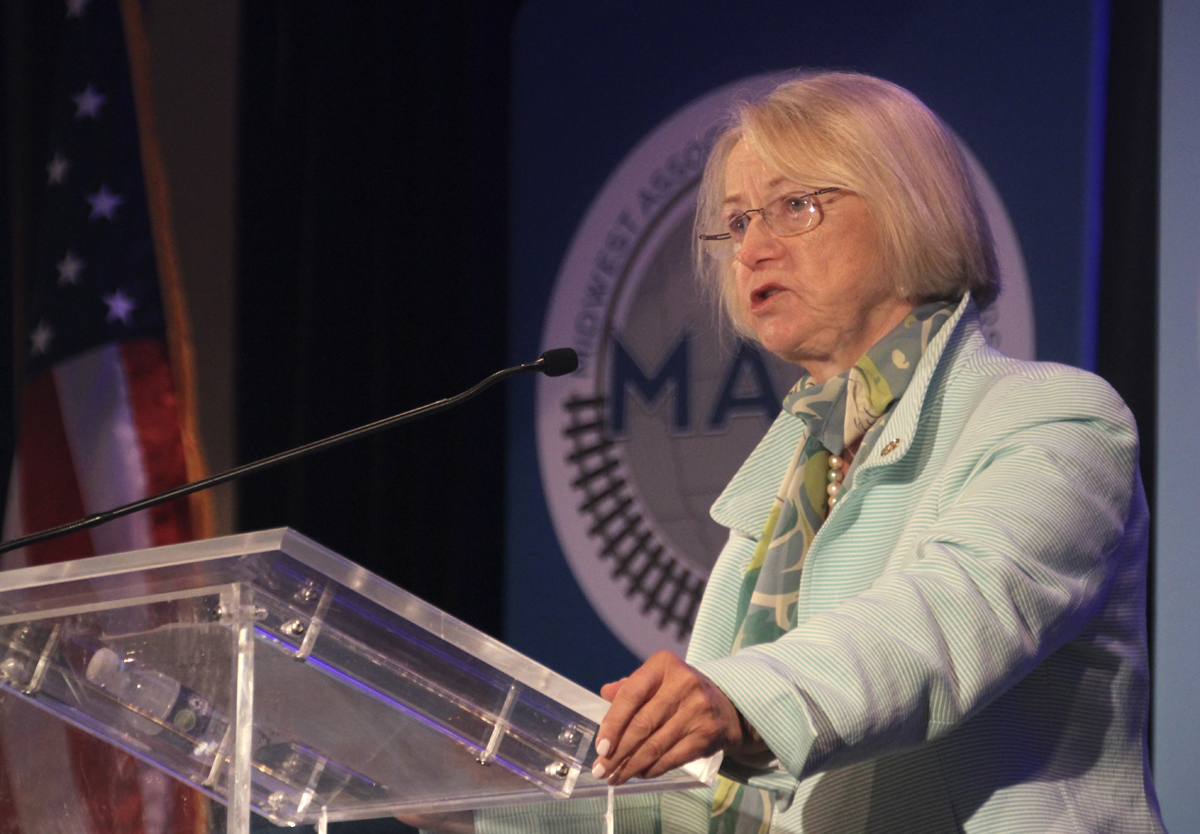

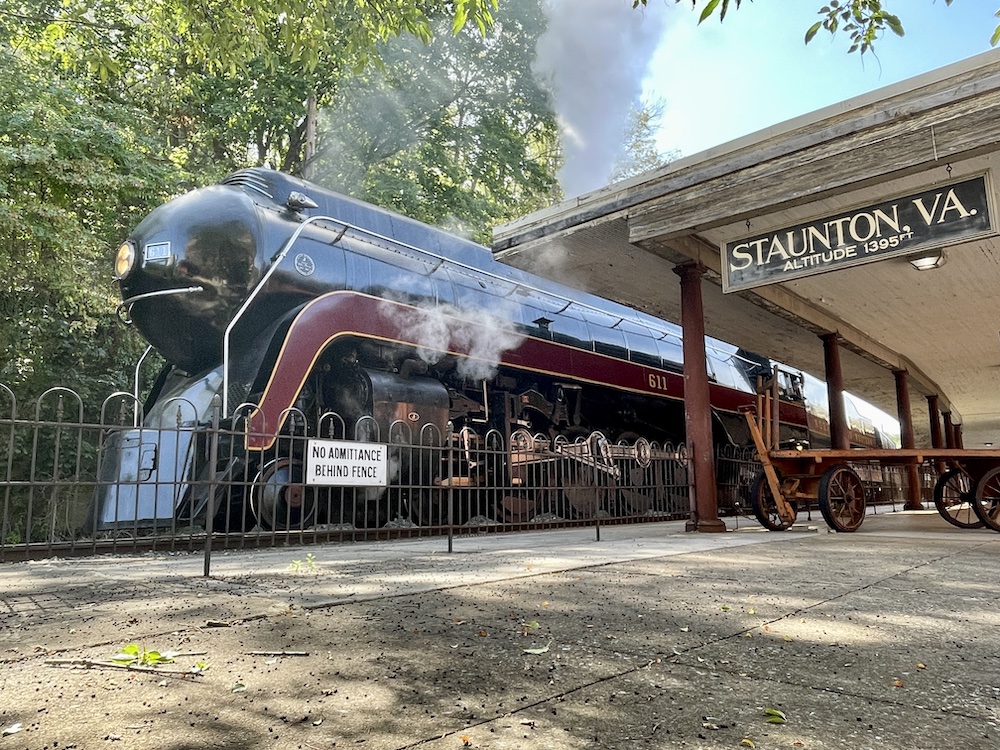
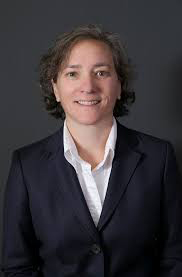




The key for supporting Brightline is that it is not Amtrak; but rather, a viable private competitor sorely needed in the passenger rail market. Brightline cannot afford to fail.
However, what remains in question is the proposed Las Vegas service. Without direct access to LA Union Station; even better, Santa Barbara and Anaheim, what market study validates the optimism that people will drive to the Metrolink station or Victorville just to connect to Brightline, where another transfer will be required in Vegas?
Brightline will be 78mph from Miami to Cocoa with some brief segments allowing higher speeds where crossing signals and the older draw bridges allow it. The route from Cocoa to Orlando Airport will be a 128mph service.
I drove through the other day to look at the progress at Cocoa. The wye is done and the sidings along the FEC are finished. The tunnel under FL-528 is about 50% complete and the FL-528 earthen bridge over Brightline at I-95 is 40% complete.
Lots of walls being built along the ROW using those concrete puzzle pieces with the dirt piled up along side of it. Most if not all the exit ramps along the Beachline have been raised to accommodate the fast trains.
There were mountains of concrete ties stacked up at Cocoa. The ROW into the Orlando Airport was still pushing a lot of dirt. Looks like they are waiting for permits to build new crossings.
Why aren’t highways & aviation funded this way? The Hwy Trust fund has been broke for over a decade with the funding gap plugged with nearly a $100 billion from the General Revenue adding to the deficit. Passenger rail has to go begging to find every way possible to get funding, what’s next? Cookie sales? Garage sales?
Brightline appears to be successful with its operation in Florida but it is not High Speed Rail. With regard to its proposal for real HSR in the Las Vegas to Apple Valley market, it failed badly to generate interest in the bond market last year, and many of us out here think it won’t succeed this year. Their projections for 20 or so daily trains from a remote SoCal location to/from Las Vegas seems wildly optimistic.
They also didn’t have a more defined cost structure the first time they tried to sell bond for Brightline West…as stated in the story, this time they’ll have a more buttoned up(read: narrowed down costs) when they present the bonds to the market, that’s usually one of the deciding factors for bond holders.